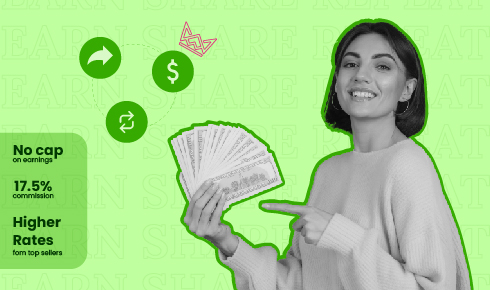Social media and marketing are no longer separate ideas—they now move together. Whether you’re scrolling through Instagram, watching product demos on YouTube, or seeing brand memes on X, you’re watching marketing in action.
Social media marketing gives businesses a direct line to their audience. It helps brands build visibility, form relationships, drive engagement, and spark conversations at scale. And because it happens where people already are, it often feels more personal and authentic than traditional marketing.
This guide breaks down everything you need to know—from what social media marketing actually means to how to start, what it costs, and what kind of career paths it opens up.
What is Social Media Marketing?
Social media marketing uses platforms like Instagram, Facebook, LinkedIn, YouTube, and others to promote a brand, product, or service. It goes beyond just posting pictures or updates—using content, interaction, and strategy to connect with people and guide them toward a business goal.
This form of marketing allows brands to speak directly to users, respond in real-time, run targeted ads, and build a loyal community. Whether you’re a small business or a global brand, social media provides tools to grow awareness, drive traffic, boost sales, and build trust—all in one place.
At its core, social media marketing combines creativity, timing, audience insight, and consistent effort to build something valuable. It’s no longer optional—it’s where business and community meet.
How to Do Social Media Marketing Step-by-Step
Social media marketing isn’t just about showing up—it’s about showing up with intention. Every successful brand on social media follows a structure: they know their audience, have a clear plan, and keep testing what works.
Here’s a complete breakdown of how to do social media marketing effectively, even if you’re starting from scratch.
1. Set Clear Goals Before You Post
Start with a goal—not a post. Ask yourself: What do I want out of social media?
- Want more people to know about your brand? Aim for awareness
- Want more traffic to your site? Focus on engagement and clicks.
- Want more sales? Plan for lead generation or conversions.
Tie each goal to a measurable metric—like reach, click-through rate, or signups—so you can track if it’s working.
2. Choose the Right Platforms Based on Your Audience
You don’t need to be everywhere—just where your audience is. Here’s a quick guide:
- Instagram – Great for lifestyle, beauty, fashion, and small businesses
- LinkedIn – Ideal for B2B, recruiting, and professional services
- Facebook – Still useful for local businesses, events, and communities
- X (Twitter) – Good for updates, customer service, and trending conversations
- YouTube – Best for educational, how-to, and long-form product content
- TikTok – Great for short-form creative videos and Gen Z audiences
Research where your audience hangs out and tailor content accordingly.
3. Plan Your Content, Don’t Wing It
Random posting doesn’t build a brand. Create a content plan with:
- Content pillars: Themes you’ll post about (e.g., product tips, behind-the-scenes, industry news)
- Content formats: Reels, carousels, images, videos, polls, memes, and stories
- Posting schedule: Frequency matters. Post consistently—even if it’s just 2–3 times a week
Use tools like Trello or Notion to map out ideas and timelines.
4. Create Quality Content That’s Made to Connect
Social content should stop the scroll. That means:
- Eye-catching visuals (branded, clean, or bold)
- Clear messaging with a strong hook
- CTAs that nudge users to comment, share, or click
- Authenticity—people follow people, not logos
Mix informative, entertaining, and promotional content to keep it fresh.
5. Use Tools to Stay Consistent and Save Time
Manual posting every day can be exhausting. Scheduling tools help you stay on track and keep your feed active.
Try:
- Buffer or Hootsuite for cross-platform scheduling
- Meta Business Suite for Facebook and Instagram
- Later or Planoly for visual planning and auto-posting
Batch your content weekly or monthly so you’re not stuck creating last-minute posts.
6. Talk With Your Audience, Not At Them
Engagement is the heart of social media. If someone comments, replies, or mentions you—show up.
- Answer questions and thank users
- Like and reply to comments
- Use polls and Q&As to start conversations
- Feature user-generated content when possible
People remember how brands make them feel. Make them feel heard.
7. Track What’s Working—and What’s Not
You won’t improve unless you measure. Use each platform’s analytics tools to understand:
- What content drives the most engagement?
- What days or times perform best?
- Which posts led to clicks or conversions?
Refine your strategy based on real data. If carousel posts outperform single images—make more carousels. If the video gets more reach—double down on the video.
Social media marketing builds more than followers—it builds community, trust, and long-term business growth.
How to Market Your Business on Social Media
Marketing your business on social media means more than just putting up product posts. It’s about showing your brand’s personality, sharing stories your audience relates to, and offering value at every stage—from awareness to conversion.
Here’s how to use social platforms to grow your business strategically:
1. Build a Recognizable Brand Presence
Start with consistency. Your profile picture, bio, and tone of voice should all feel like “you”—across every platform.
- Use the same logo and brand colors
- Write a clear, benefit-focused bio
- Keep your voice consistent: casual, expert, fun, or friendly—whatever fits your brand
Make sure people recognize your brand the moment they land on your page.
2. Show, Don’t Just Sell
Don’t only post about your product—show it in action, tell customer stories, or solve problems around it.
- Behind-the-scenes videos
- Customer testimonials and reviews
- Use cases and tutorials
- Before-and-after transformations
Focusing on outcomes and real moments makes your content more human and relatable.
3. Use Paid Advertising to Reach More People
Organic reach is limited. To scale faster, use paid ads to:
- Boost posts that already perform well
- Run retargeting campaigns for warm audiences
- Promote lead magnets or exclusive offers
- Drive traffic to landing pages or product pages
Start small, test, and adjust. Even $5–10 per day can make a difference.
4. Collaborate with Influencers and Creators
Partnering with micro-influencers or creators in your niche can build credibility and reach new audiences.
- Choose people your audience already follows and trusts
- Let them create content in their style (don’t script it too much)
- Track results: engagement, clicks, or coupon redemptions
It’s not about the biggest following but the right fit.
5. Leverage User-Generated Content (UGC)
Encourage happy customers to share photos, reviews, or testimonials. Reposting UGC adds authenticity and social proof.
- Run hashtag campaigns
- Offer small rewards for submissions
- Ask permission and tag the user to build trust
People trust people more than brands—use that to your advantage.
6. Run Promotions, Giveaways, and Flash Sales
Occasional promos can build buzz and encourage engagement—especially when they’re interactive.
- Flash sales announced on Stories
- Giveaway contests with “tag a friend” entries
- Countdown timers for product launches
These can spark quick momentum and boost visibility.
7. Drive Traffic with Strong CTAs
Always give people a next step—whether it’s to visit your site, sign up for something, or DM you.
- Use buttons, swipe-ups, or links in bio
- Write simple CTAs: “Learn more,” “Shop now,” “Join us,” “Try free”
- Make sure your landing pages match the tone and content of the post
Don’t leave users guessing what to do next.
Social media lets you market your business without sounding like an ad. With the right strategy, it becomes your most powerful (and affordable) channel for reaching the people who matter most.
How Much Does Social Media Marketing Cost?
One of the first questions businesses ask is: How much does social media marketing cost? The answer depends on what you want, who’s doing the work, and how far you want to reach.
Here’s a clear look at the different cost factors so you can plan your budget wisely.
1. Organic Social Media (No Ad Spend)
If you’re managing content in-house with your team, the main costs are time and tools.
- Content creation (design, copywriting)
- Scheduling tools (like Buffer, Hootsuite, Later)
- Stock images or video subscriptions
- Analytics/reporting tools
Estimated cost: $100 to $500/month (excluding salaries
2. Hiring a Freelancer or Consultant
Freelancers are ideal for small to mid-sized businesses. They often handle strategy, content, and posting.
- Starter freelancers: $300–$800/month
- Mid-level freelancers: $1,000–$2,500/month
- Experienced strategists: $3,000+/month
Rates vary based on scope (just posting vs full strategy) and platform expertise.
3. Working with an Agency
Agencies manage everything—from content strategy to design, ads, and analytics. Good for businesses that want a hands-off solution.
- Small agency packages: $2,000–$4,000/month
- Larger agency retainers: $5,000–$10,000/month and beyond
Agencies are great for scaling fast but require a higher investment.
4. Social Media Advertising Budget
Running paid campaigns? You’ll need ad spend, separate from content creation or management.
- For small tests: $5–$20/day
- For lead generation: $500–$2,000/month
- For large campaigns: $5,000+/month
Tip: Start small, test what works, and scale from there.
5. Hidden or Overlooked Costs
- Boosting posts regularly
- Hiring a photographer or videographer
- Paying influencers or creators
- Buying giveaway products
- Training tools or courses for your team
Always factor these into your monthly or quarterly budget.
Social media marketing can be flexible—you can start small and grow as your needs and results grow. What matters is making sure your spending aligns with your goals.
How Much Do Social Media Marketers Make?
Social media marketing has grown into a full-time career for many—from freelance creators to in-house strategists. But how much do social media marketers actually make? The answer varies based on experience, location, role, and whether they work freelance or full-time.
1. Freelance Social Media Marketers
Freelancers often charge by project, month, or hour. Rates depend on their niche, skills, and past results.
- Entry-level: $10–$25/hour
- Mid-level: $25–$75/hour
- Experienced or niche experts: $100+/hour
Monthly retainers can range from $300 to $5,000+ depending on the workload and client size.
2. Full-Time In-House Social Media Marketers (USA Average)
Salaries differ depending on the size of the company and the scope of work:
- Social Media Coordinator: $40,000–$55,000/year
- Social Media Manager: $55,000–$75,000/year
- Social Media Strategist: $70,000–$100,000/year
- Head of Social / Director-Level: $100,000–$140,000/year or more
Tech companies and agencies tend to offer higher pay, especially when performance-based bonuses are included.
3. Additional Income Sources
Some social media marketers also earn from:
- Affiliate marketing
- Content monetization (e.g., sponsored posts, brand deals)
- Course creation or consulting
- Paid newsletter or community management
This flexibility makes social media marketing one of the more scalable career options in digital marketing.
Real-World Examples of Social Media Marketing Success
Great social media marketing isn’t just about reach and results. Some brands have used social media to get noticed and drive growth, loyalty, and serious business outcomes. Let’s look at a few examples that show what works and why.
1. DuoLingo on TikTok: Personality Over Promotion
DuoLingo, the language-learning app, turned their green owl mascot into a viral TikTok personality. Instead of pushing features, they leaned into humor, trends, and relatable content.
- What worked: Entertaining content that didn’t feel like marketing.
- Result: Millions of views, brand love from Gen Z, and increased app downloads.
- Lesson: People don’t always want a sales pitch—they want content that feels native to the platform.
2. Nike on Instagram: Storytelling That Inspires
Nike doesn’t just post product shots—they tell stories. From athlete highlights to community campaigns, their content sparks emotion and encourages action.
- What worked: High-quality visuals, consistent brand voice, and resonating message.
- Result: One of the most followed and engaged brands on Instagram.
- Lesson: Build connection through storytelling, not just product promotion
3. Netflix on Twitter (X): Real-Time Engagement
Netflix uses its X handle to connect with fans casually and personally. They reply with memes, jokes, and polls about trending shows.
- What worked: Quick replies, humor, and genuine interaction.
- Result: High engagement and a loyal follower base.
- Lesson: Treat your followers like real people, not just numbers.
4. Small Bakery Goes Viral with Behind-the-Scenes Reels
A local bakery posted daily reels showing how they make pastries, pack orders, and interact with walk-in customers.
- What worked: Relatable, raw, and consistent behind-the-scenes content
- Result: Thousands of new followers, long queues at the store, and nationwide shipping demand
- Lesson: You don’t need a big budget—just authentic content and consistency
These examples prove that you don’t need to be a giant brand to make social media work—you just need to be intentional, authentic, and consistent.
Supercharge Your Social Media Marketing with Konker
If you want to elevate your social media presence without the overhead of traditional agencies, Konker offers a dynamic marketplace connecting you with skilled freelance social media marketers.
Why Choose Konker for Social Media Marketing?
- Expert Freelancers: Konker hosts a diverse pool of social media marketing professionals who specialize in creating compelling content tailored to your brand’s voice and audience.
- Customized Campaigns: Whether you need content creation, community engagement, or comprehensive social media strategies, freelancers on Konker provide services that align with your specific goals.
- Data-Driven Insights: Leverage analytics and performance metrics to refine your social media marketing efforts, ensuring optimal engagement and ROI.
- Comprehensive Services: From content creation to paid campaigns, Konker’s freelancers cover all aspects of social media marketing.
- Flexible Collaboration: Engage with freelancers for one-off projects or establish long-term partnerships based on your needs.
- Transparent Pricing: Enjoy competitive rates with no hidden fees, making it easier to manage your marketing budget.
Konker’s platform is designed to streamline the process of finding and collaborating with social media marketing experts, making it a valuable resource for businesses aiming to enhance their online presence.
Final Thoughts: Getting Started with Social Media Marketing
Social media marketing is one of the most accessible ways to grow a business—whether you’re a solo founder, a local shop, or part of a global brand. It gives you direct access to your audience, the power to share your story, and the tools to turn followers into customers.
You don’t need to do everything at once. Start with:
- One or two platforms where your audience is active
- A simple content plan focused on value and consistency
- Clear goals tied to measurable actions
- A willingness to experiment, learn, and adjust
Focus on being helpful, not just visible. When your content is made with intention, people notice—and they remember.








Leave a Comment